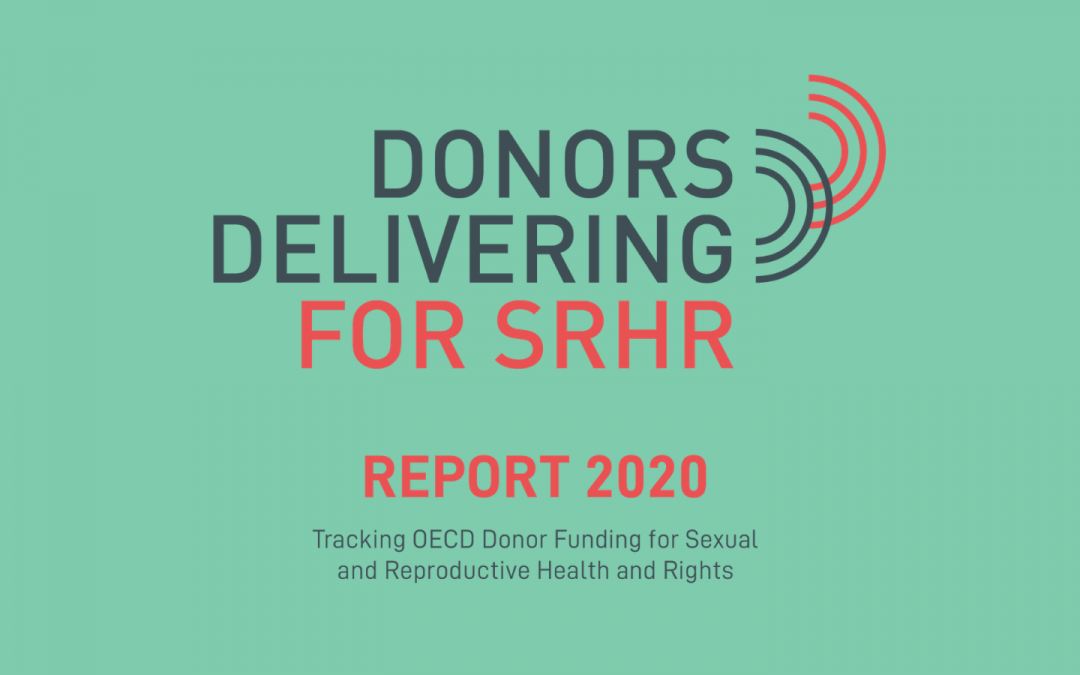We interviewed Steffie Neyens, Advocacy Officer at the DSW EU Office – one of the team behind the recently published Donors Delivering for SRHR report 2021, to explore what’s new about the report, its key findings, and their implications.
Could you tell us a little about the history of Donors Delivering, and why such a tool is important?
For over ten years, DSW jointly published the Euromapping report together with the European Parliamentary Forum for SRR. It was an accountability and transparency tool for funding disbursements to reproductive, maternal, newborn, and child health (RMNCH) and family planning (FP). In the latest editions, Euromapping analysed the latest OECD data, and tracked thirty public OECD DAC donors’ contributions to RMNCH and FP, both in total funding and as a percentage of their Official Development Assistance (ODA) based on an official methodology called Muskoka. This allows comparison of donors´ contributions to these issues, as the same percentage was applied to all donors.
Lately, however, we saw a need to expand this tool to cover all aspects of sexual and reproductive health and rights (SRHR), as defined by the Guttmacher Lancet Commission. We have witnessed increased contestation of SRHR, gender equality, and women‘s rights in Europe and throughout the world. In parallel, numerous reports highlight the increased prevalence of harmful practices, especially on girls, as well as an increase in teenage pregnancy rates. The COVID-19 pandemic has exacerbated these challenges, shining a spotlight on the need to focus on SRHR. The recent 25th anniversary of the International Conference on Population and Development (ICPD) and the upcoming anniversary of the adoption of the Beijing Declaration and Platform for Action, remind us of political commitments made to SRHR.
While several excellent expert reports exist to track funding for reproductive, maternal, and newborn health, family planning, and gender, no methodology has thus far captured the full breadth of SRHR, especially the ‘rights’ aspect. Therefore, there was an impetus to develop a new tracking tool focused on SRHR.
What’s new? Could you walk us through the methodology?
The basis for this new SRHR tracking methodology is the Muskoka 2 methodology, developed by the London School of Hygiene and Tropical Medicine. This methodology estimates the value of RMNCH, and its three subcomponents RH, MNH, and CH, by applying imputed percentages for twenty five OECD – DAC purpose codes (also known as CRS codes). The sum of all this provides an estimate of a donor‘s ODA benefitting RMNCH and its three components. When combining the data for RH and MNH, we captured the health component of SRHR, but we were still missing the rights aspect. Additional data was needed to estimate the ODA going to Sexual and Reproductive Rights (SRR), and so the CRS codes that could include SRR projects were identified in line with the Guttmacher-Lancet report.
In the next step, all projects in the period 2013 – 2017 under these newly identified codes were analysed. Whenever the project was considered SRR-related, the full or partial amount was counted. The weight of SRR projects for a specific CRS code was calculated based on the total amount spent on SRR under this code versus the total ODA under this code. To avoid double-counting, only CRS codes that are not considered in Muskoka 2 were taken into account. This new methodology thus tracks ODA to SRHR by combining a donors’ ODA for RH and MNH (according to Muskoka 2) and SRR (new methodology). We analysed the data in total disbursements but also as a percentage relative to the donor‘s total ODA allowing for comparisons between different donors and the ‘prioritisation’ of SRHR in their development cooperation.
This is a practical exercise applied to all donors, and therefore not perfect, but it is an excellent tool to compare countries, given that the same methodology is used for each country, to spark discussion and hold donors to account.
Could you take us through some of the key findings of the report?
One of the eye-openers of this report is that the major donors, those with the highest total amounts of ODA, are not the most ‘generous’ when looking at their SRHR disbursements as a percentage of their ODA. Smaller donors such as Luxembourg, Ireland, and Finland are giving greater priority to SRHR in their overall ODA in comparison to larger funders such as the EU Institutions, France, and Germany.
While EU Institutions were the third-largest donor in terms of overall development assistance in 2018, they are a much smaller actor when it comes to the share of their ODA allocated to SRHR, FP, and RMNCH. Only 1.26% of their total ODA spending went to SRHR, 0.19% to FP, and 2.43% to RMNCH.
Meanwhile, in 2018, only five European countries – Denmark, Luxembourg, Norway, Sweden, and the UK – reached the long-pledged commitment to allocate 0.7% of their Gross National Income (GNI) to ODA. Interestingly, these are also the countries that prioritise SRHR in their development cooperation (more than 3% of their ODA).
Where do you see the opportunity for the EU to reconcile its resource allocation with its policy commitments?
The EU has made many political commitments to SRHR, including the European Consensus for Development, the Communication on the Global EU response to COVID-19, and the EU Gender Action Plan III. However, disbursements have gone down – both in total terms and as a percentage of ODA. To live up to commitments and address the needs in partner countries, this has to change. The programming of the Neighbourhood, Development, and International Cooperation Instrument (NDICI) provides a unique opportunity for the EU to live up to its commitments, and truly be an SRHR champion. In order for a strong international cooperation policy to truly have an effect, implementation and appropriate resource allocation are key.
To read the full report, visit: www.donorsdelivering.report

